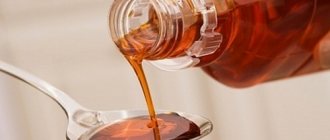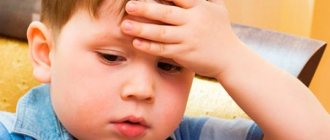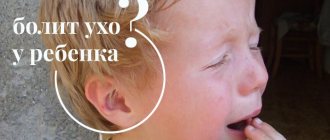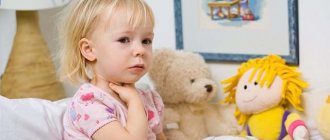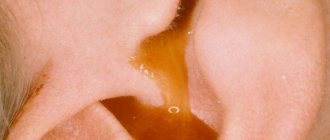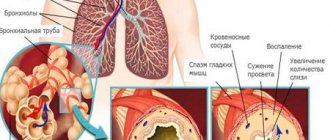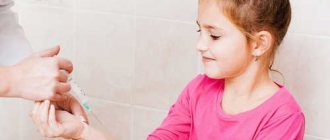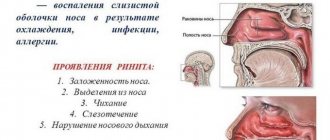A child’s cough is something every parent faces from time to time. The cough can be dry or wet, long-lasting or episodic, it can be constant, or it can only occur at night. It can even “bark” and “croak.” But no matter what the child’s cough, it always causes concern among parents and prompts the latter to run to the pharmacy for antitussive drugs. Are such actions of parents justified? What consequences can self-medication lead to? And how do good parental intentions pave the way for a child to end up in a hospital bed? Read about all this in our article.
Cough is not a disease
First of all, you need to understand well that coughing is not a disease, it is only one of the symptoms of any disease. Therefore, saying “cough treatment” is incorrect. They don’t treat a cough , they treat the disease that caused the cough. And to be completely correct, they are treating a child for a disease characterized, among other things, by a cough. The cough can only be relieved.
What is a cough? This is a natural protective reaction of the body to the aggressive adverse effects of the environment. So does the rise in temperature. In fact, a cough is a reflexive way of clearing our respiratory tract of various kinds of pathogens, which means that it is necessary to act not on the cough itself, but on the cause that causes it.
How to treat an incipient cough in children
Instructions
Try to prevent the development of a cough. If you notice that your child is sick with acute respiratory infections or acute respiratory viral infections, give him immunomodulatory drugs. These include drugs such as Derinat, Viferon, Kipferon, Interferon, Anaferon, Arbidol, etc. What exactly to choose from this list is a difficult question. Immunity-strengthening agents affect each person, especially small ones, differently. Listen to what the doctor advises. Or use an already proven medicine. If the cough starts suddenly, check to see if your baby is choking on something. Check with him or his loved ones what he did before. Gently but firmly tap your back. If no other symptoms appear and the severe cough continues, go to the emergency room immediately. There the foreign body will be removed from the child's respiratory tract. If the baby is lethargic, has a fever and a runny nose, medicinal herbs will help cope with the disease before a doctor’s visit. Brew 2 tablespoons of plantain leaves, coltsfoot, thyme or a special breast mixture from the pharmacy in a glass of boiling water. Leave for 20 minutes. Strain the broth and dilute with boiled water at room temperature. Herbal tea will cleanse the bronchi. In addition, give your child hot milk and honey. Folk remedies can be used for almost any diagnosis: acute respiratory infections, bronchitis or even pneumonia.
Give mucolytic drugs if the illness begins with a dry cough. It is particularly painful and may keep the child awake or cause vomiting. Use ACC, Bromhexine, licorice root tincture, Mukaltin, which help thin the mucus. Dissolve ACC powder in water. It is easy to give to babies as it often has a pleasant fruity taste. Select "Bromhexine" in syrup form. Children drink pills or solution less willingly. The Mukaltin tablet should be diluted in a glass of water, but the taste is not very pleasant. Give licorice root syrup if you want to combine mucolytic and immunomodulating effects. All of these drugs are approved for the treatment of children.
If a dry cough exhausts your child, use non-narcotic antitussives. Give the patient medications containing the active ingredients glaucine, oxeladine or butamirate. The principle of action of such drugs is based on the fact that they block the cough reflex at the brain level. But they don't get used to them. Although these medications are relatively safe, it is best to have them prescribed by a doctor.
For severe colds, use combination medications. Products such as Codelac-phyto or Doctor Mom simultaneously have antitussive, mucolytic, expectorant, bronchodilator and anti-inflammatory effects.
Call a doctor immediately if coughing begins in an infant under one year old or in a child with chronic illnesses. There is serious cause for concern if the baby has a temperature above 38 degrees or shortness of breath.
Helpful advice
You cannot give expectorants and antitussives at the same time; in this case, sputum can clog the bronchi.
Sources:
- Children's cough. We treat and prevent
- I started coughing, what should I do?
Cough is a spasmodic movement of the respiratory tract, which is aimed at removing an irritating element. In general, the human respiratory system is large, since it includes: the throat, nose, trachea, mouth, larynx, bronchi along with branches and lungs; many processes in these parts of the body can cause a cough. This is why it is quite difficult for parents to determine why their child is coughing. This can only be done by a specialist, who should be contacted in case of any cough.
Instructions
The most common cause of cough in a child is an upper respiratory tract infection. This is mainly due to the fact that air enters the lungs through the nose and mouth. As a result, diseases such as tonsillitis, rhinitis, sinusitis and adenoids may appear, contributing to the development of cough in the child, which, in this case, will not be the main symptom. The cough will reflexively occur in a lying position, so it will only occur at night, and much less often in the morning, since mucus from the upper inflamed sections will accumulate in the nasopharynx.
A child’s severe cough may occur due to laryngitis, which is most severe in children under seven years of age. The main cause of its occurrence is considered to be an upper respiratory tract infection. Its symptoms begin with a common runny nose, mild cough and fever. But after a few hours, the child may develop a barking cough, which is accompanied by a whistle when inhaling. Very often, a child may experience a feeling of lack of air, which causes motor agitation and nervousness. Sometimes hypoxia may develop, manifested by blueness of the lips. A special feature of laryngitis is that the child coughs only when he sleeps, and in the morning his condition improves significantly. To treat laryngitis, you will need to do inhalations for several days, sit with it in the bathroom with a hot water tap open, and also ensure that the air in your apartment is humid. Doctors in this case rarely prescribe drug treatment, since laryngitis subsides on the third day. There are other symptoms of cough. These are mainly diseases of the upper and lower respiratory tract: tonsillitis, ARVI, acute respiratory infections, inflammation of the pharyngeal tonsils, tonsillitis or sinusitis. It is worth remembering that a sudden cough indicates developing bronchial asthma. The culprit for the development of cough can also be severe gas pollution, excessively overheated or dry air in the room, as well as tobacco smoke. A dry, hoarse or barking cough may indicate inflammation of the trachea and larynx. A long, paroxysmal cough indicates whooping cough or bronchial asthma, and a wet cough indicates pneumonia or bronchitis. It is not uncommon for infants to develop a cough during feeding. In this case, experts recommend reducing the amount of food, which is absolutely acceptable for several days. When a child’s cough is accompanied by a high fever, especially if it lasts for several days, then most likely it is pneumonia.
Video on the topic
www.kakprosto.ru
Causes of cough in children
As a rule, there are two main causes of cough in children - infections and allergies. Although in rare cases, coughing also has a psychological cause.
Respiratory tract infections
In the vast majority of cases (about 90%), cough occurs against the background of an acute respiratory viral infection (ARVI). Less commonly, it is caused by a bacterial infection, caused, for example, by staphylococci or streptococci (bacterial bronchitis) or fungal.
When a child coughs against the background of an infection, he or she will certainly experience other symptoms concomitant with the infection: runny nose, fever, sore throat, aches, weakness, etc. - one or all of them at once.
The picture of infectious cough is ambiguous. It can be either dry or wet, nighttime, daytime, with or without sputum discharge. Therefore, it is extremely important to find out the causative agent of the disease! Depending on whether it is a bacterium, virus or fungus, treatment regimens will differ radically.
The main difference between a viral cough and a bacterial one (provided it is wet) is the appearance of the sputum. With a viral infection, it is clear and liquid; with a bacterial infection, the sputum is thick, cloudy, mixed with pus.
Main causes of cough and possible diseases
Cough in children is a common symptom that can be associated with a number of diseases.
Cough in children is considered a symptom that accompanies various pathologies that affect the respiratory system, its upper or lower parts.
Cough can also be provoked in childhood by otolaryngological diseases, for example, laryngitis, tonsillitis, pharyngitis, and sinusitis. Contact with allergens can also cause symptoms; this is usually observed in bronchial asthma. Cough is a sign of croup, diphtheria, and tuberculosis.
Factors that affect the appearance of cough include the entry of a foreign object into the respiratory tract and the inhalation of harmful substances (dust, smoke, poisons, steam). The cough reflex can occur against the background of very dry air. In rare cases, a cough may occur due to psycho-emotional overload and stressful situations. It's called psychogenic.
A cough can be a sign of a serious illness, so it's best to get checked by a doctor
There are several types of cough. Typically, children develop a dry and wet appearance. Dry cough is considered the most dangerous, since this cough makes it difficult to clear sputum, and it is often paroxysmal.
It is important to know that there are some signs when the child needs to be shown to a specialist. These dangerous symptoms include:
- Hoarseness of voice
- Whistling and wheezing in breathing
- Dyspnea
- Loss of consciousness
- Blood in sputum
- Cough lasting more than two weeks
- Suffocation
- Change in skin color
- Enlarged lymph nodes
- Convulsions
- Fever
- Swelling of the throat mucosa
- Expectoration with purulent discharge
- Loss of voice
- Pain in the chest when coughing
A sudden, acute cough also requires immediate help, because in some cases it may indicate the presence of a foreign body in the baby’s respiratory tract.
A common consequence of this symptom is the occurrence of bronchial asthma. If there is a foreign object in the respiratory tract, asphyxia is possible. Also in this case, infectious and inflammatory processes develop in the respiratory organs.
Usually, if the respiratory tract is not treated in a timely manner, the inflammatory process spreads to the lower sections. Complications of coughing during colds include the development of otolaryngological diseases, for example, sinusitis, otitis.
There are two types of cough - productive (wet) and non-productive (dry).
Children under 4 months of age do not cough much. Therefore, if a newborn coughs, it is serious. If a child is coughing just terribly, this may be a manifestation of infection with respiratory syncytial virus.
This infection is extremely dangerous for babies. When a child is older than 1 year, coughing becomes less of a cause of concern. And often it is nothing more than a cold.
But sometimes a child’s severe cough is a reason to visit the doctor. Understanding what the different types of cough mean will help you know when to see a doctor and how to treat a cough in your baby.
Its main cause is inflammation and mucus production in the upper respiratory tract. At night, a cough occurs because mucus drains down the back of the throat. A productive cough also clears mucus from the lungs during pneumonia or bronchitis.
Peculiarities
A wet cough is an effective way to rid a child’s body of unnecessary fluids in the respiratory system. When an infant's cough is the result of a bacterial infection, the mucus and sputum produced will contain bacteria, which the pediatrician can detect through culture.
Older children may spit out the mucus. Younger children tend to swallow it. As a result, babies with a wet cough may also develop an upset stomach. The upside to this is that anything ingested will eventually leave the body through stool or vomit.
Inflammation in the upper respiratory tract is almost always accompanied by a dry cough. However, if the infection spreads lower to the bronchi and lungs, or mucus leaks, a nonproductive cough can become productive.
A prolonged dry cough is also observed after a respiratory tract infection.
The hallmark of croup is a deep cough that sounds like barking and is worse at night. The baby's voice is hoarse. The patient's breathing during sleep is accompanied by a high-pitched and whistling sound (stridor).
This condition requires immediate medical attention.
Parents of a child who is allergic to cat hair, dust, or other elements in their environment may feel like they have a cold that will never go away.
Allergies can cause nasal congestion or a runny nose with clear mucus, as well as a cough due to constant drainage. Children with asthma also cough often, especially at night.
When a child has asthma, he or she experiences attacks of wheezing. Exposure to cold in a person with bronchial asthma can also cause coughing.
If your baby starts coughing after running (exercise-induced asthma), this is another symptom in favor of asthma as the cause of the cough.
Many cases of pneumonia, an infection in the lungs, begin as a cold. If your child has a cold that gets worse—a persistent cough, difficulty breathing, fever, body aches, chills—call a doctor. Bacterial pneumonia often causes a wet cough, while viral pneumonia causes a dry cough.
Bronchitis occurs when the structures that carry air into the lungs become inflamed. This often occurs during or after a cold and flu. Bronchitis causes a persistent cough for several weeks.
When a child has bacterial pneumonia or bronchitis, they will need an antibiotic to treat the infection and cough.
When a child has a cough and runny nose that lasts more than ten days without signs of improvement, and your doctor has ruled out pneumonia and bronchitis, sinusitis can be suspected in the baby.
Bacterial infection is a common cause of dry cough. However, excessive fluid draining into the airways, coupled with infrequent coughing in a newborn, can lead to a productive cough as mucus accumulates there.
If the doctor determines that the child has sinusitis, he will prescribe an antibiotic. The cough should stop once your sinuses are clear again.
A cough that lasts two weeks or more without other signs of illness (eg, runny nose, fever, lethargy) or allergies is often a sign that a child has a foreign object stuck.
It gets into the throat or lungs. This situation is more common among young children who are very mobile, have access to small objects and like to put everything in their mouth.
In most cases, it is immediately clear from the child that he has inhaled some object - the baby will begin to choke. At this moment, it is vital for parents not to become confused and provide first aid.
Whooping cough
May cause convulsive cough. A child with whooping cough will usually cough nonstop for 20 to 30 seconds and then struggle to catch their breath before another coughing fit begins.
Signs of a cold, such as sneezing, runny nose and weak cough, make themselves felt within two weeks before the onset of more severe coughing attacks.
In this situation, call your doctor immediately. Whooping cough can be severe, especially in children under 1 year of age.
Read a detailed article by a pediatrician about the causes, symptoms and methods of treating this disease,
like whooping cough in children
.
Cystic fibrosis
Cystic fibrosis affects approximately 1 in 3,000 children, and a persistent cough with thick yellow or green mucus is one of the most obvious signs that a child may have inherited the disease.
Other signs include recurrent infections (pneumonia and sinusitis), poor weight gain, and a bluish tint to the skin.
Gases from the environment, such as cigarette smoke, combustion products and industrial emissions, irritate the mucous membranes of the respiratory tract and cause the child to cough. It is necessary to immediately determine the cause and, if possible, eliminate it.
Cough syrups, or how to make your child’s condition worse
Cough remedies (a completely incorrect name, like “head pills,” but often used by us) are a real “gold mine” for pharmaceutical companies. They are sold without a prescription and are wildly popular with parents. Believing the advertising of this or that “miracle” remedy and driven by the desire to quickly alleviate their child’s condition, parents buy all these syrups, tablets and drops. Without even thinking about the fact that the principles of action of such drugs can be completely different.
Remedies aimed at combating dry coughs are completely unsuitable for wet coughs. The action of some is aimed at suppressing the cough reflex, while others are aimed at liquefying mucus and facilitating its removal from the bronchi.
Or maybe it’s compote?
In one of his programs, the famous and respected children's doctor Komarovsky stated that there is no evidence in the world that the effectiveness of cough remedies is higher than the effectiveness of drinking plenty of fluids (fruit drinks, compotes or regular drinking water).
The thing is that the viscosity of sputum directly depends on the viscosity of blood. And you can make your blood less thick only by drinking enough fluid. In addition, drinking plenty of fluids significantly alleviates the child’s condition during a viral or bacterial infection, relieves intoxication and removes pathogenic viruses and bacteria from the body along with the breakdown products of medications. Therefore, do not rush to “label” your pediatrician if he recommends your child to drink more fluids instead of cough syrup.
How to alleviate the child's condition?
So how can you help your baby and save him from painful coughing attacks? There are a few simple recommendations in this regard. But only if the cause of the cough is determined by a doctor!
- Drink more (we already talked about this).
- Humidify the air in the room. It’s better to spend money instead of ten different syrups and tablets and buy a good air humidifier. Dry warm air is a direct contraindication for coughing. Sometimes a child's cough does not occur due to infection, but simply because the air in the house is too dry. The mucous membranes dry out and cause a sore throat. The child reflexively tries to get rid of the unpleasant sensation and begins to cough. Simply damp cleaning the room can help your child cope with coughing attacks.
- Walk. The child must have access to fresh, cool air. Ventilate the room more often, and if you do not have a fever, do not refuse to go for walks.
A child begins to cough: how to treat it?
Physiologically, it turns out that children get sick more often than adults. Doctors associate this fact with the formation of immunity in children. Acute respiratory diseases, colds may be accompanied by a runny nose and cough. This condition in children usually lasts a week. When a child just starts coughing, parents think about how to treat an incipient cough at home. They do not always know the reason that caused this condition. Basically, cough can develop against the background of diseases of the upper and lower respiratory tract. It is better not to ignore this symptom; perhaps the child is sick with pneumonia or tuberculosis.
The cough can be dry or wet. In the first case, inflammation of the upper respiratory tract occurs, in the second - lower, characterized by the discharge of accumulated sputum.
Doctors distinguish a physiological cough, which is a protective reflex of the human body, allowing the airways to be cleared of accumulated small amounts of mucus.
An incipient cough can be cured at home. Parents get help from time-tested advice and recipes. Before starting treatment, it is necessary to determine the nature of the cough. In order not to worsen the child’s condition, at the slightest sign of deterioration in the general condition, you should contact a pediatrician.
Using compresses for children
Compresses are an effective way to help cure a cough. They come in different types. They are not used for skin diseases.
A long-term dry cough in a child is treated as follows: rub lard and simmered oil into the chest area, and cover the top with a dry canvas cloth.
There are the following ways to use compresses to treat cough:
- Compress applied at night: boil 4 potatoes in their skins, pour in 10 ml of turpentine, odorless vegetable oil, alcohol. Mash thoroughly and stir until smooth. Make 2 cakes, wrap with a wide bandage and gauze. Place one cake on the child’s back, the second on the chest, but not in the heart area. Place the baby under the blanket for 1.5 hours. After the elapsed time, remove the compress from the child, wipe dry, put on dry underwear, and put him to rest. It is enough to carry out 4 procedures for recovery.
- Compress for cold cough: take 3 parts of water and 1 part of apple cider vinegar. Mix, add a teaspoon of honey. Soak cloth with the resulting mixture and apply it to the throat and chest. Place plastic wrap and a towel on top. Leave for 20 minutes.
- Oil-based compress: vegetable oil is heated in a water bath, then a canvas cloth is dipped in it, wrung out, and applied to the child without touching the heart area. Place wax paper on top and tie a warm down or woolen scarf. The child can sleep wrapped up all night. Be sure to drink plenty of fluids.
Inhalations for a beginning cough
Diseases accompanied by a dry cough, in addition to medications, are treated with inhalations. This is an effective method: during the procedure, the medicinal substance acts directly on the mucous membrane of the respiratory tract, promotes the liquefaction and discharge of sputum, and reduces bronchospasm.
For diseases of the upper respiratory tract, steam inhalations are considered to be of high quality. They can be easily carried out at home. For obsessive coughing, it is good to do the following inhalations:
- With alkaline mineral water - “Borjomi”;
- With a solution of baking soda: dissolve four teaspoons of soda in a liter of water.
When carrying out the procedure, you should remember safety measures - do not leave children unattended for a minute! Inhalation using boiling water is strictly contraindicated!
For babies under one year old, the water temperature should be no more than 30 degrees, for older children - up to 40 degrees.
Procedure for steam inhalation:
- Water of a certain temperature is poured into a kettle with a small neck.
- A funnel is made from cardboard and placed on the spout of the teapot.
- Initially, the effect of steam is tested on an adult, then a child is allowed to participate in the procedure.
- The duration of inhalation lasts up to three minutes. They do it in the morning and in the evening.
When a dry cough begins in a child, it is better to do the following procedure: boil unpeeled potatoes with a small amount of water in a saucepan, bend down, cover yourself with a blanket, and inhale the evaporation for a quarter of an hour.
If the child does not have allergies, steam inhalations with iodine are done. Drop 5-10 drops of iodine into the water and inhale the resulting steam.
Brew decoctions of herbs - thyme, coltsfoot, chamomile. Add baking soda to the broth - 2 tsp, breathe over the steam.
In medicine, nebulizers have often begun to be used for inhalation. This device creates an aerosol cloud of medicine and helps to reach poorly ventilated areas of the bronchi in a short period of time.
The procedure for inhalation using a nebulizer:
- Add the required number of medicinal drops into a special bottle according to the instructions, dilute with saline to the 4-5 ml mark.
- The duration is from 5 to 10 minutes.
- Take between meals, 2 times a day, unless otherwise directed by your doctor.
Mustard plasters and massage are faithful helpers
If there are no contraindications, then mustard plasters are used for dry cough even in infants. They improve blood circulation and warm the skin. Infants and children under 5 years old are given mustard wraps as soon as they start coughing, as follows:
Take half a liter of non-hot water, dilute a tablespoon of mustard powder in it. Moisten the cloth with the resulting solution, wring it out, and wrap it around the entire body or the desired area. Cover well with a blanket and leave for up to 5 minutes. Then open it, wash the skin with warm water, put on warm, dry underwear, pajamas, and put the child to bed. For recovery, it is enough to carry out 4 procedures.
If mustard plasters are placed on children aged 5 years and older, we must remember that their skin is still tender and sensitive. Mustard plasters are placed on the body only through thin fabric. It is recommended to do it like this:
The mustard plaster is shaken to distribute evenly throughout the bag, kept in warm water for 20 seconds, and applied to the body. Cover the top with a towel or blanket.
Mustard plasters are placed in the back - between and under the shoulder blades, in front - on the chest, not in the heart area. Contraindications for placement are skin damage, skin diseases, elevated body temperature, and a tendency to allergies.
In the systemic treatment of cough, to remove phlegm, doctors recommend doing a light massage: patting, tapping the chest. Before the procedure, the body area is rubbed with a herbal balm. For example, Doctor Mom will do.
Traditional methods for recovery
For a dry cough, the doctor will prescribe the necessary medications, which are taken in strict dosages. When treating coughs, do not forget about traditional methods. Drinking infusions of medicinal plants:
- Breast collection 1: consists of medicinal plants - oregano, marshmallow, coltsfoot;
- Breast collection 2: consists of licorice, plantain, coltsfoot.
The infusion is simple to prepare: boil half a liter of water, add 2 tablespoons of the mixture, leave for an hour and a half. Dosage: from 1 tsp. (for children under one year old) up to 100 ml (over 5 years) at a time.
Parents need to try to change the cough from “dry” to wet. The bronchi will be cleansed, airway patency will be restored, irritation of the mucous membrane will be eliminated, and the cough reflex will stop. It should be remembered that cough is a symptom of various diseases. Therefore, visiting a doctor is mandatory. A timely and correct diagnosis is the key to successfully overcoming cough in children.
stoporvi.ru

